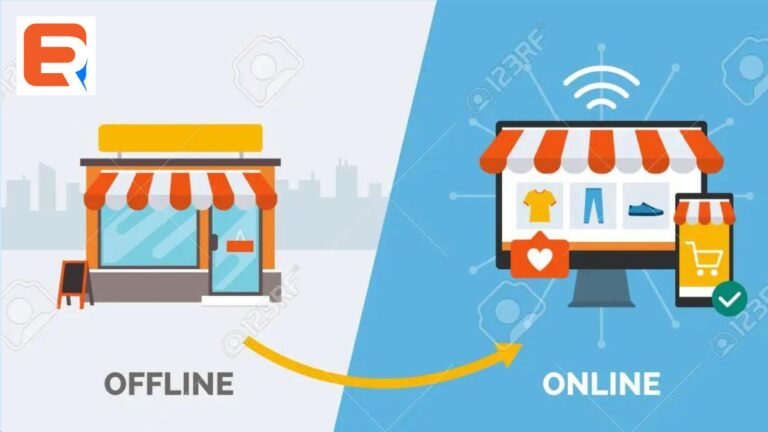The rapid growth of e-commerce has made it essential for traditional brick-and-mortar stores to establish an online presence. Transitioning from an offline store to an online store opens up new avenues for business growth, increases customer reach, and enhances overall profitability. In this article, we will provide a comprehensive guide on successfully transitioning your business from an offline store to an online store, covering key steps, strategies, and considerations to ensure a smooth and effective transition.
Conduct Market Research and Identify Target Audience
Before making the transition, it’s crucial to conduct thorough market research to understand the online landscape and identify your target audience. Analyze your competitors’ online presence, study consumer behaviour, and assess market trends. This research will help you determine the most suitable online platforms, marketing strategies, and product offerings for your target audience. Understanding your customers’ preferences and needs will enable you to tailor your online store accordingly, maximizing its potential for success.
Choose an E-Commerce Platform and Design Your Online Store
Selecting the right e-commerce platform is vital for building a user-friendly and visually appealing online store. Consider factors such as ease of use, customization options, security features, payment gateways, and scalability. Popular e-commerce platforms like Shopify, WooCommerce, and Magento offer robust features and integrations. Once you’ve chosen a platform, design an engaging and intuitive online store. Create a cohesive brand identity, optimize product pages with compelling visuals and descriptions, and ensure seamless navigation for a smooth user experience.
Streamline Inventory Management and Fulfillment Processes
Efficient inventory management is crucial for running a successful online store. Implement inventory management software that tracks stock levels, manages SKUs, and automates reorder processes. Streamline your fulfilment processes by partnering with reliable shipping carriers and optimizing packaging and shipping procedures. Provide customers with accurate shipping information, order tracking capabilities, and hassle-free returns and exchanges. Ensuring efficient inventory management and seamless fulfilment will contribute to a positive customer experience.
Develop a Comprehensive Online Marketing Strategy
To drive traffic and generate sales, a robust online marketing strategy is essential. Utilize digital marketing channels such as search engine optimization (SEO), social media marketing, email marketing, content marketing, and paid advertising. Craft compelling and engaging content that aligns with your target audience’s preferences and needs. Leverage social media platforms to build brand awareness, engage with customers, and promote your products. Collaborate with influencers or industry partners to extend your reach. Regularly analyze and optimize your marketing efforts based on data and customer feedback.
Provide Exceptional Customer Service
Delivering outstanding customer service is crucial for building customer trust and loyalty. Offer multiple channels for customer support, such as live chat, email, and phone, and ensure prompt and helpful responses. Implement a robust customer relationship management (CRM) system to track customer interactions, preferences, and purchase history. Personalize customer interactions whenever possible and proactively address customer concerns. You can differentiate your online store and cultivate long-lasting customer relationships by prioritising exceptional customer service.
Optimize for Mobile Devices and Ensure Website Security
With the growing number of mobile users, optimizing your online store for mobile devices is essential. Ensure that your website is responsive, fast-loading, and provides a seamless user experience across different screen sizes. Additionally, prioritize website security to protect customer information and build trust. Implement SSL certificates, use secure payment gateways, and regularly update your website’s security patches. By providing a mobile-friendly and secure shopping experience, you can cater to a broader audience and instil confidence in your customers.
Conclusion
Transitioning from an offline store to an online store opens up a world of opportunities for business growth and expansion. By conducting market research, choosing the right e-commerce platform, streamlining inventory and fulfilment processes, implementing a comprehensive marketing strategy, providing exceptional customer service, and optimizing for mobile devices and website security, you can successfully navigate this transition. Embrace the digital landscape, adapt to changing consumer behaviours, and continuously innovate to thrive in the competitive online marketplace.




